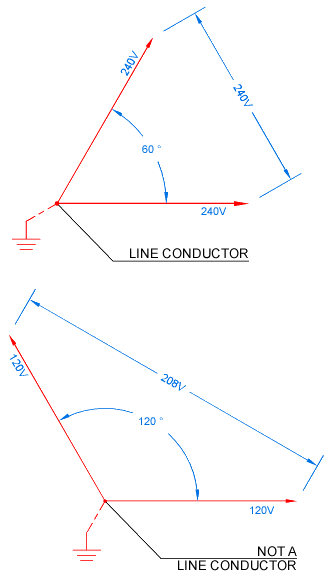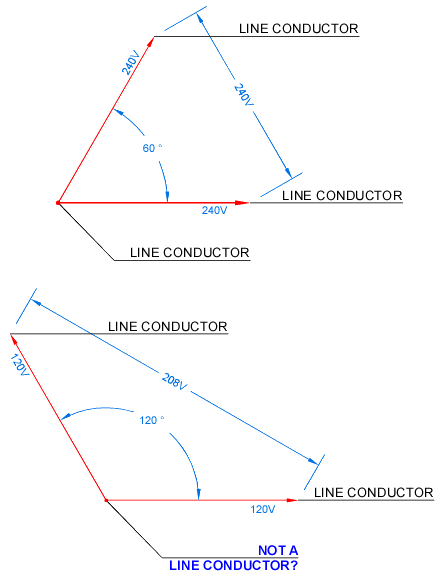jpweygandt said:This message is for David, Inspector Medina County Ohio, and all who have been on this discourse. I have learned a lot by reading here. I had an electrical contracting firm in Medina County at one time. 240 Volt 3 Phase Delta Corner Ground systems are not overly abundant in our area. At one time both voltages of Delta services were common. In Ohio most of them have been replaced with Y services. In the early days they were not grounded. The state required utilities to ground those services that were already installed and any new installations. New installations were usually meant to make existing systems larger or increases in amperage size.
Some existing ungrounded systems were corner grounded. The state required a grounded conductor for all services. Thus, the installations of Y services. I know of no services in Medina County, Ohio using Delta services. However, I know of at least several in Summit County, Ohio. Dry type transformers were used to create lighting services.
During World War I and II when copper was really scarce many three phase motors were fed with just two wires and the third was obtained at the location by attaching the third wire to the building steel. Thus the early Delta systems were less expensive and easier to install.
Jerry
Jerry,
You?re quite right about the lack of delta secondarys in Medina County. . My time spent as an inspector has been of no use in understanding or experiencing the configurations involved in this discussion. . I need to fall back on schooling and also years spent as a L38 wireman in Cuyahoga County and projects in Cuyahoga and Ashland Counties during my years as a contractor.
Since you have background with older corner grounded delta systems, I have a question for you.
?During World War I and II when copper was really scarce many three phase motors were fed with just two wires and the third was obtained at the location by attaching the third wire to the building steel. Thus the early Delta systems were less expensive and easier to install.?
The third grounded phase was delivering its current thru the building steel. . Now if the connection to the building steel would be lost on either the equipment end or the service end, I can imagine the danger to the worker if he was to touch that grounded phase while in contact with the building steel. . Up until the moment that the connection is lost, the worker could have touched the grounded phase wire without incident. . But then suddenly that same touch becomes lethal.
But as long as there is no lose of connection on the grounded phase, are you aware of any symptoms experienced by contact with the building steel or anywhere else along the grounded phase path ? . Since technically the workers body could be seen as a parallel path to ground, but obviously one of a much higher resistance, I can imagine a theoretically small amount of current taking the path thru the workers body resulting in a tingling or even a little shock possibly comparable to static discharge. . What was actually experienced by physical contact ?
David



